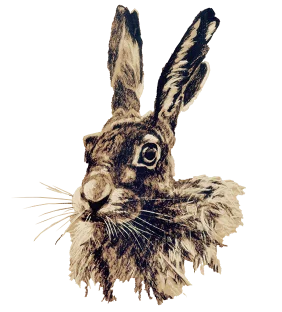European hare
European hare (Lepus europaeus) inhabits all of Europe except the southern part of Spain (African hare), the northern part of Sweden, Finland, and the northern part of Russia (white hare). In this vast territory, a large number of geographical races form, of which the Central European hare lives in our country.
In Slovakia, the hare is found on more than 70% of the territory. Its natural habitat is open lands, primarily fields, meadows, and forest edges, where there is little rainfall. The hare, thanks to its brown colouring, is very well camouflaged.
The hare is a solitary and nocturnal animal. He goes out to pasture in the evening and in the morning he lays down in a hide in the shape of an oblong hole, which he digs himself. Before lying down in hide, it often makes several turns and jumps to confuse a potential predator following its trail. Sensing danger, the hare stays in the den for a very long time, relying on the fact that the predator will not notice it. Only when the enemy gets close enough to cross "the escape distance", the hare takes off from the den and escapes at full speed. In addition to fast running, it uses sharp turns and sudden changes of direction to save itself.
The hare uses energy sparingly and is therefore faithful to its habitat. A lot of times even at the expense of the diversity of the diet. He orients himself mainly by listening and smelling. He has relatively poor eyesight, but he perceives moving objects well.
The hare has a very high reproductive capacity. In our conditions, the hare has 3-4 litters per year. Only 1-2 cubs are born in the first and the last litters, in the other litters the hare has 3-5 cubs. The mating season of hares lasts from the end of winter to the end of summer. The hare has a double-horned uterus, which enables the simultaneous development of embryos of different ages and sizes (superfetation).
Despite this high reproductive capacity, hare gains are gradually decreasing. The cause is mainly the increase in the number of chemicals and mechanization of agriculture, as well as large-scale fields with the same crops.
Hare hunting is one of my favourites. In areas with many hares and with good hunting organization, it is an experience full of dynamics, observation, movement, and interactions with other hunters, and also with hunting dogs, which are an irreplaceable part of every such hunt.

